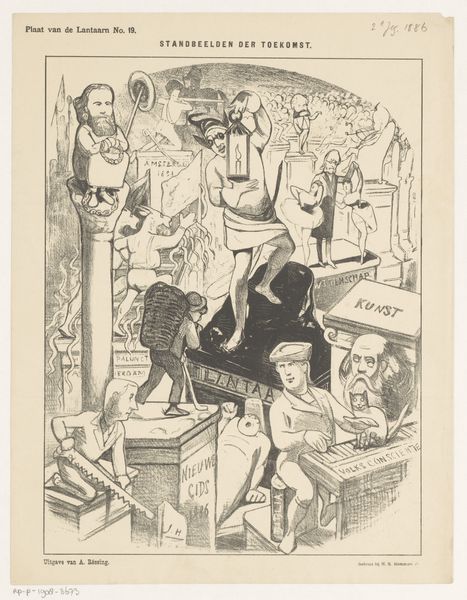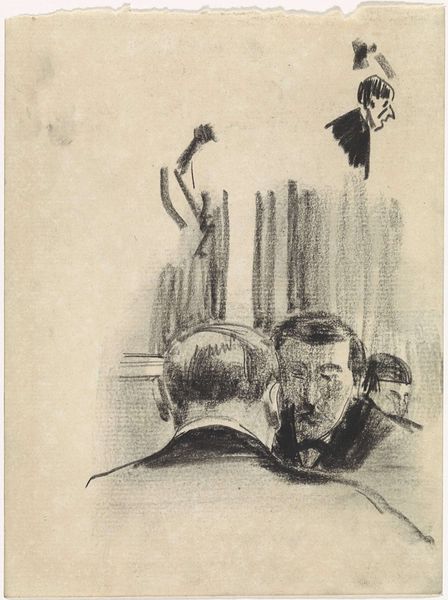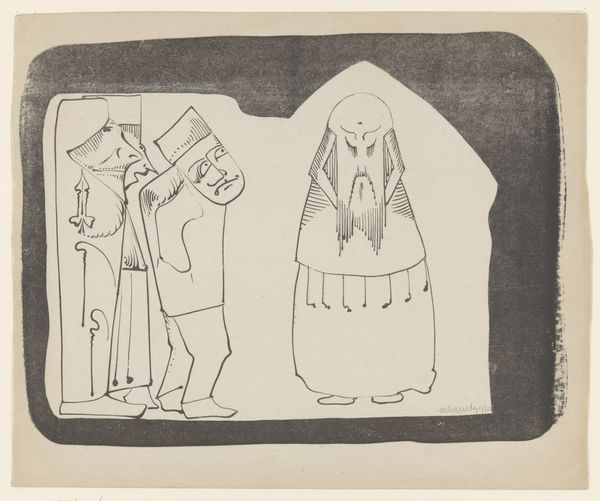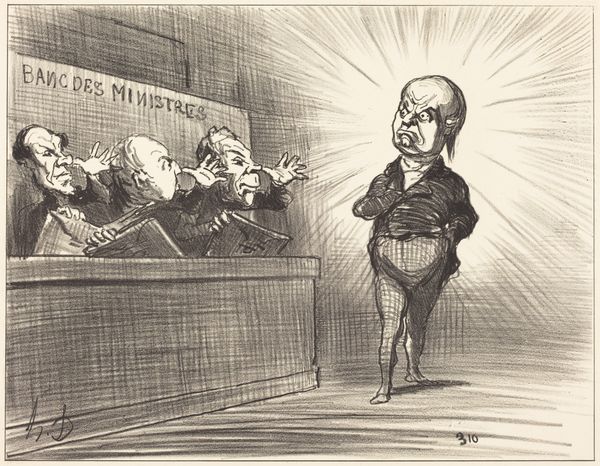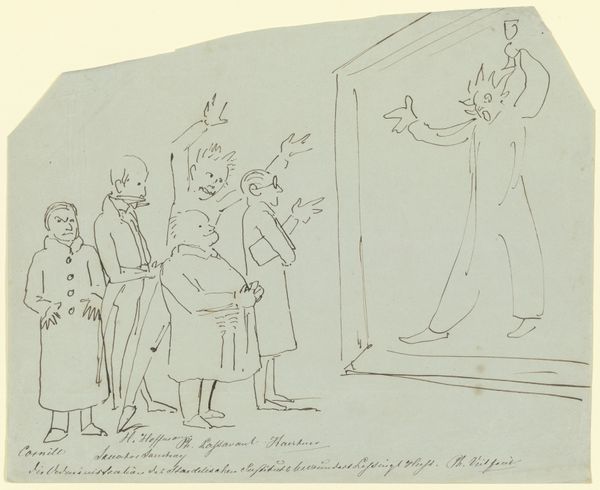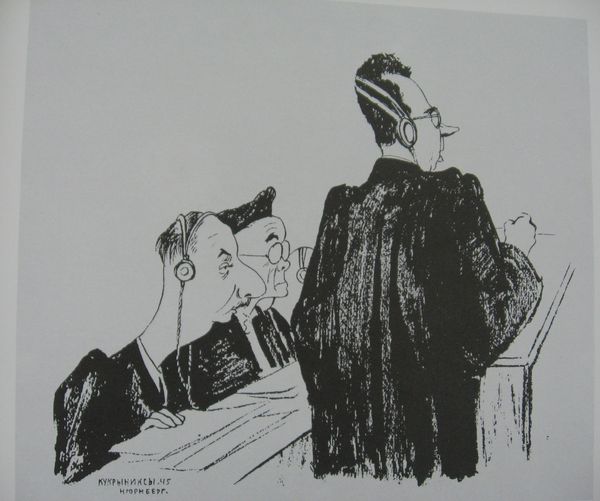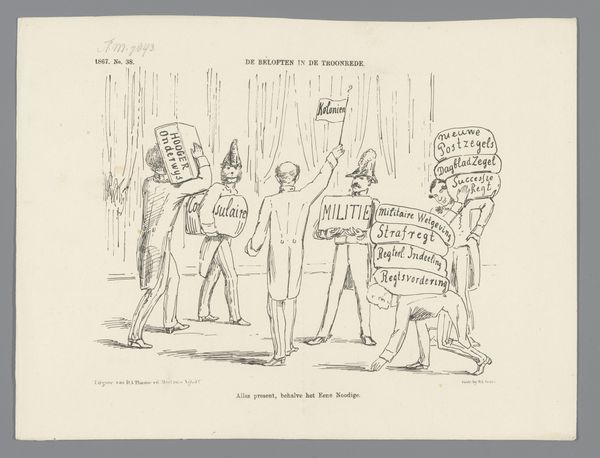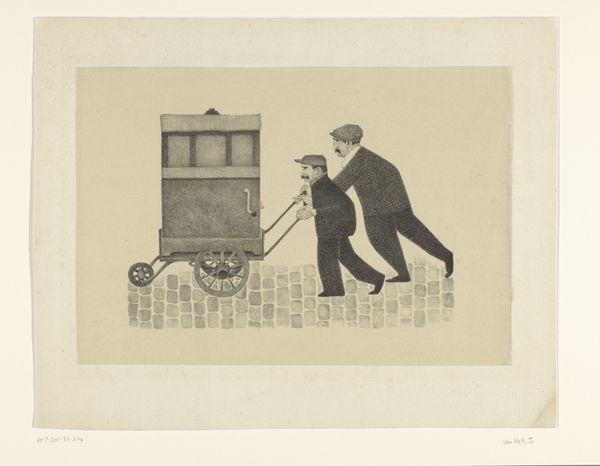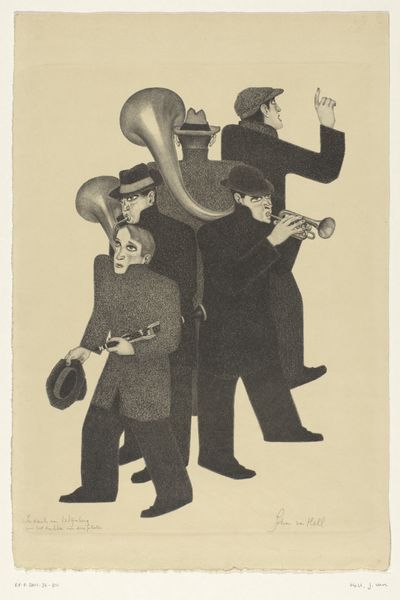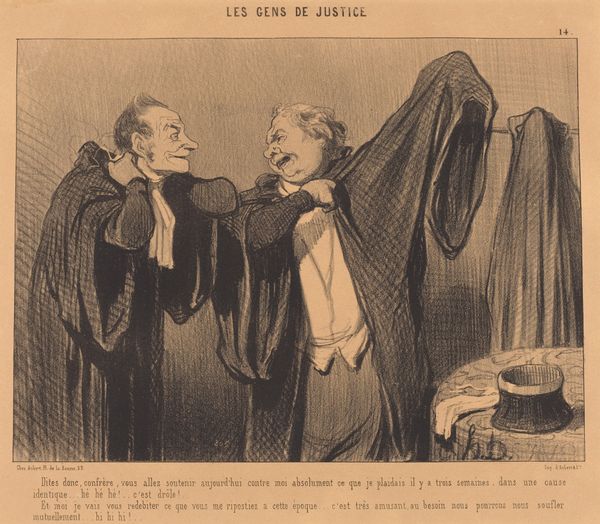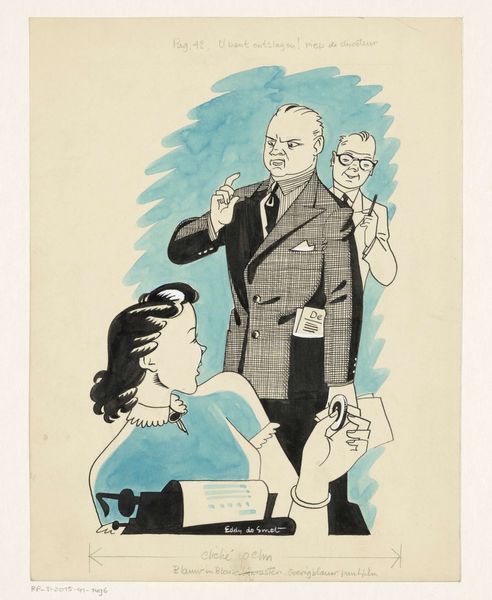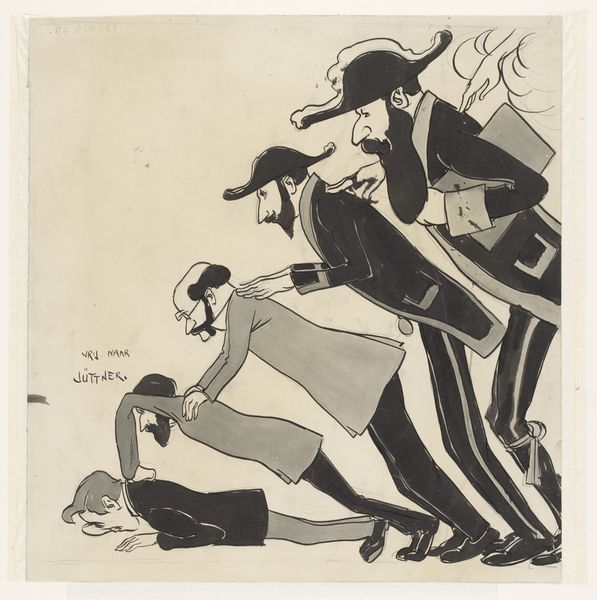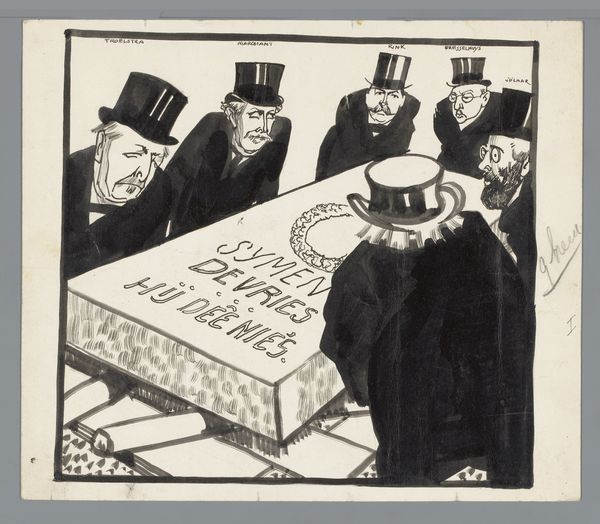
Dimensions: height 315 mm, height 473 mm
Copyright: Rijks Museum: Open Domain
Editor: This is Samuel Jessurun de Mesquita's "Entre ces trois mon coeur balance," a woodcut print from 1930 currently housed at the Rijksmuseum. The figures are so striking – almost grotesque, but in a way that pulls you in. What hidden meanings do you see in these characters and their relationships? Curator: The faces immediately strike me as archetypal masks – a visual language rooted deep in cultural memory. Look at the exaggerated features. They aren’t portraits in the traditional sense, but embodiments of fixed ideas, perhaps even societal roles that confine and define us. Consider the central figure, seemingly perched on a judicial or academic stand; do you see neutrality there, or something more insidious? Editor: Insidious! That’s a great word for it. I hadn't quite put my finger on it, but there is a certain unsettling smugness. And what about the title, "My heart sways between these three." Who's heart? The artist's? Ours? Curator: The title becomes the key, doesn’t it? It frames the whole composition as a psychological drama. Are we witnessing a moral dilemma? Perhaps the central figure represents a kind of cold, rational authority while the other two figures embody conflicting passions or ideologies pulling the heart in opposite directions. Notice how Mesquita renders them as almost theatrical figures set against what appears to be set-like geometric structure - stage for performance? Or judgement? Editor: Oh, I like the stage idea! The limited color palette really adds to the drama too; it's like stark choices without any room for nuance. Curator: Exactly. It eliminates the grey areas. We're left with pure symbolism – black and white, light and shadow. I encourage to observe each figure as their archetypical representation - stripped of individualization they turn into emblems of universal forces that perpetually act through and on the psyche. Do you have the feeling Mesquita is judging himself perhaps, rather than merely observing others? Editor: Definitely, and seeing it as a reflection of internal struggle, as opposed to a social critique, makes it even more compelling. Thank you! Curator: The power of symbols allows it; the genius is it always remains ambiguously interpretable – our interpretation becomes the artwork.
Comments
No comments
Be the first to comment and join the conversation on the ultimate creative platform.
